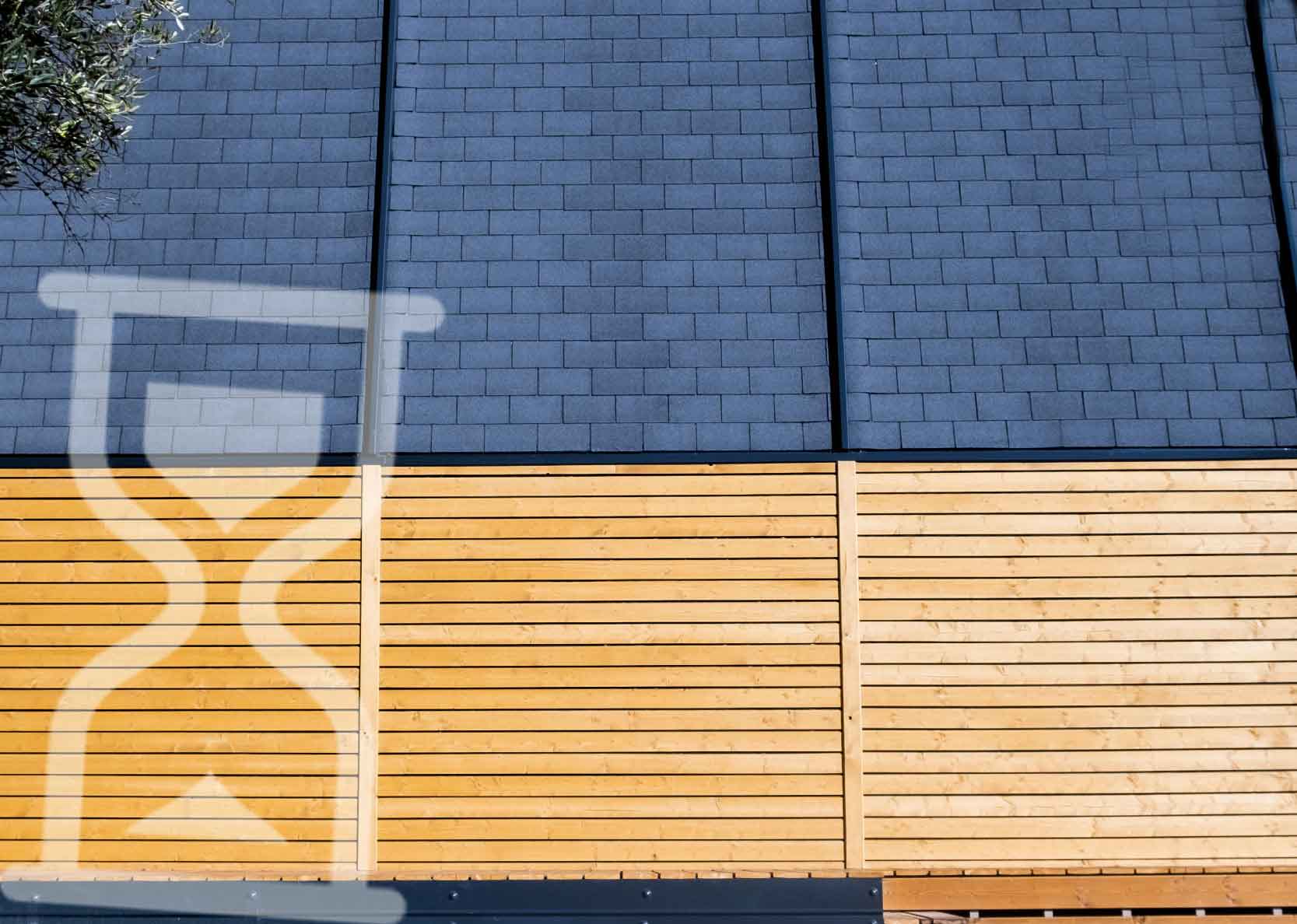How long does a wooden house last? Is the lifespan of a wooden house comparable to that of a late concrete or steel structure?
These are two of the most frequent questions we are asked by our clients and more generally by those who decide to approach the construction of a wooden building.
In order to answer them, we must first clarify the regulatory framework within which we move and separate the responsibility of the builder to the client from the more general concept of a building’s rated life (NV).
Regarding the guarantee on the property that the builder must necessarily provide to the client, the reference standard is Article 1669 Civil Code.
The company that carried out the construction work on the property will be required to guarantee the immunity from defects of the property for 10 years
Interior of a modular wooden house A-FOLD
from the completion of the work. But what are the serious defects covered by the 10-year warranty?
The Supreme Court has clarified that serious defects of the property, as such eligible to activate the 10-year warranty, are those alterations that affect its normal enjoyment, functionality and habitability. These are defects that, while not
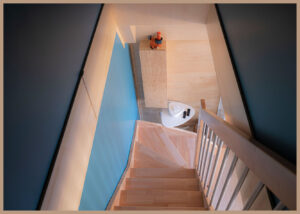
being impeding the use of the property, render the building uninhabitable or of painful habitation and in any case considerably reduce its value.
The Nominal Life of Timber Structures and the NTC2018
In Section 2.4.1 of the NTC2018, the Nominal Design Life of a work is conventionally defined “as the number of years in which the work, subject to necessary maintenance, is expected to maintain specific performance levels.”
Different works are classified into three different categories, to which increasing performance levels are associated:
- temporary structures,
- structures to which ordinary performance is required
- structures with high performance levels.
In turn, the three performance levels are associated with minimum values of the Nominal Life VN of the work, which are 10, 50 and 100 years, respectively.
The service life of the work is thus a conventional parameter, assumed at the design stage (hence the specification of the current NTC), to which verifications of time-dependent phenomena, such as durability or fatigue, must be referred through the proper sizing of construction details.
Again we do not encounter any differentiation based on the type of technology employed in the construction of a building, the discriminant here to the nature of the building itself and its intended use.
Historic and world-famous wooden buildings
The predilection for wood as a building material for housing, which is easy to source but especially easy to work with, lies not only in its technical and thermal properties, but in its strength, stiffness, hardness and density. Four physical and mechanical characteristics that make wood the product par excellence in the construction of prefabricated houses and the design of buildings for civil use.
Below we present some examples of wooden buildings and houses with exceptional durability throughout history, starting with structures that are thousands of years old and ending with constructions that approach those of today.
 The wooden piles of Ledro (TN) from the Bronze Age
The wooden piles of Ledro (TN) from the Bronze Age
Although today we are witnessing a return to the design and construction of houses or the buildings made of wood, history teaches us that since ancient times man has always chosen to build dwellings made exclusively of this type of material. This is demonstrated, for example, by the pile dwellings of Ledro, a municipality located in the Province of Trento that hosts a museum specifically dedicated to such constructions: the Ledro Pile Dwelling Museum. In this museum, it is still possible to admire the engineering talent of men who lived in the Bronze Age (between 2,200 and 1,350 B.C.) who built on the eastern shore of the lake of the same name Ledro something like 10 thousand pile dwellings, the remains of which are still present in an open-air location. The remains, discovered during work on the construction of the hydroelectric power plant, have remained intact and perfectly preserved despite the fact that the lake water had covered them for more than 4 thousand years. This is an unthinkable period of time for a concrete building that often requires renovations even only 20 years after its construction!
The thousand-year-old pagoda of the Horyu-Ji temple in Japan
The concept of home in Japan is quite different from what we in the West have. Although wooden buildings correspond more to functional needs (such as earthquake resistance and thermal insulation) the need to build in wood is dictated by the fact that those who buy a property are generally interested in the land surrounding it. The wooden house, once the land is bought, is renovated from scratch to be used for the owner’s needs: instead of living in a second-hand property, people prefer to rebuild it from scratch, adapting it to their family’s needs.
Still looking back to a fairly distant past emerges another construction right in Japan, whose exclusively religious function was the cue for the creation of a worship building that can still be visited: the Horyu-Ji temple pagoda. According to some historians, the pagoda, dating between 587 and 607 AD, appears to be the oldest surviving wooden construction still standing despite its five levels, the terrible earthquakes Japan is plagued with, and a fire that devastated the pagoda in 670 AD. Rebuilt in the first three decades of the 700s AD, scholars debate the actual age of this house of worship: whether it is from the seventh century or the eighth century matters little. The fact is that more than a thousand years have passed without the wooden temple being in the slightest bit scratched by time, weather and, even more so, the terrible power of nature.
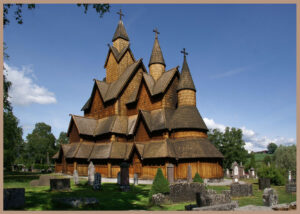 The ancient wooden church in Urnes, Norway
The ancient wooden church in Urnes, Norway
Staying within the realm of houses of worship, some historians rank the church in Urnes, Norway, as among the oldest existing churches in all of Europe. According to some sources, Urnes is one of thirty Norwegian churches with the same architecture, but what sets it apart is not only the date of construction, which was around 1130 to 1150. A characteristic feature of the Urnes church is the fact that it appears to stand on the ruins of an earlier building, this time made of masonry, the dating of which from the 11th century AD makes it possible to establish the existing connection between Viking culture (typical of Norway) and Christian culture, which spread during this period precisely in northern Europe. Even today it is still possible to admire the building’s doorway, also made of wood, decorated with a skillful mastery that only craftsmen of the time could possess.
And again. Leonardo Da Vinci’s genius is also palpable in the design of prefabricated wooden buildings designed and built by the master around the end of the 1400s. According to some studies, Leonardo succeeded in making a mobile home for Duchess Isabella Sforza, who installed it right inside her park. The function of the mobile home was to be the one we attribute to our prefabricated wooden houses: mobility, ease of use, but above all the ability to create something that certainly requires little time and the use of a simple natural material.
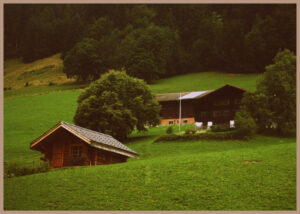 The spread of wooden houses in Europe, America, Japan
The spread of wooden houses in Europe, America, Japan
History on prefabricated wooden houses gives us different insights such as the American constructions of the nineteenth century, built to meet the need for new housing due to the increasing immigration from Europe. The constructions, which were simple to build in a very short time, had the function of providing those who needed it with a roof to have the immediate disposition of, and it was at this juncture that the first construction companies specializing in the use of wood in the building industry were born.
An example of a wooden house in the Alps
Today, wooden houses are widespread in many regions of northern and eastern Europe, America, Japan and Asia. In more recent times (we speak of the early twentieth century), a single-family house built for the 1910 hunting exhibition was first designed in Austria. The proponent of the project was Weznel Hartl, and the house can still be admired in a region of Lower Austria. And if anyone was still skeptical about the functionality of prefabricated housing, it is enough to know that Albert Einstein also lived in a wooden building in Berlin and regarded it as the best place to reside during the warm season. The Einsteinhaus (literally Einstein’s house) is still open to the public today and is used to hold seminars, workshops and to host young researchers who, thanks to a scholarship, can spend the summer months inside one of the places inhabited by the world’s most famous contemporary physicist.
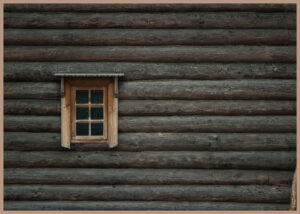 Russia is the home of traditional wooden houses
Russia is the home of traditional wooden houses
The Izba is a typical Russian rural construction, a kind of country house favored mainly by peasants. Peculiar to this structure is not so much the exclusive use of wood, but the use of a technique for assembling the beams that in the past were assembled simply using ropes, axes and joints. The use of nails was banned because of the cost of raw materials such as iron, but thermal insulation was provided by a stove installed inside the Izba.
Similar to the Izba is the Ail, also made of wood but with a special insulation made from the bark of trees. The structure may be hexagonal or octagonal, and instead of a stove, a chimney is placed in the center of the house whose chimney is nothing more than a hole in the roof.
This brief excursus into the millennia-long history of wooden construction has shown us how a wooden house can potentially have unlimited durability as long as its design and construction is entrusted to specialized companies that can boast experience in the field of wooden construction. Simple mistakes in design or installation can significantly undermine the durability of a wooden house.

